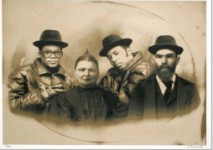Combatting Gray Markets: A Copyright-Protected Distribution Right or a Sherman Act Violation?
At one time, the prospect of stating legal claims against gray market importers looked bleak. Product manufacturers tried trademark protection, but trademark law proved disappointingly unsuccessful. One company has now turned to copyright protection, and this company obtained a Ninth Circuit decision that found a store using a gray market importation scheme unable to raise a defense to copyright infringement. The company is Omega S.A., a Swiss luxury watch manufacturer known for producing the Seamaster line of watches appearing in many James Bond films, and the case is Omega S.A. v. Costco Wholesale Corp., 541 F.3d 982 (9th Cir. 2008). In spite of Omega’s favorable Ninth Circuit judgment and opinion, market-wide legal questions about Omega’s distribution practice remain. Regardless of whether or not a manufacturer could state a claim for copyright infringement against gray marketers, infringement defendants may answer back by counterclaiming an antitrust violation. And if an antitrust counterclaim can halt copyright enforcement, then Omega’s win at the Ninth Circuit would end up a hollow victory at best or an academic stroll through the Copyright Act at worst.
Here are the facts of Omega v. Costco. Omega maintains a tight grip on its authorized distribution channels. Omega attempted to gain control of its watches’ distribution by engraving a design on the back of its watches (pictured below) and registering this design at the U.S. Copyright Office . Omega sold watches with these designs to their authorized distributors. Somewhere along the distribution line, however, the watches ended up in the hands of distributors outside of Omega’s authorized channels abroad. As the Ninth Circuit recognized, this is a paradigm gray market importation scheme, in which products meant to be sold in one territory are imported into another, usually for cheaper prices. One of Costco’s suppliers based in New York imported watches from these unauthorized distributors and eventually transferred the watches to Costco, which then sold these watches to its customers in California. One of those purchasing customers turned out to be a plant employed by Omega.
. Omega sold watches with these designs to their authorized distributors. Somewhere along the distribution line, however, the watches ended up in the hands of distributors outside of Omega’s authorized channels abroad. As the Ninth Circuit recognized, this is a paradigm gray market importation scheme, in which products meant to be sold in one territory are imported into another, usually for cheaper prices. One of Costco’s suppliers based in New York imported watches from these unauthorized distributors and eventually transferred the watches to Costco, which then sold these watches to its customers in California. One of those purchasing customers turned out to be a plant employed by Omega.
Omega then sued Costco for violating their exclusive right to distribute its copyrighted works and for importing them without Omega’s authorization. Costco asserted the first-sale defense, arguing that Omega’s right to control the distribution of its watches under both the distribution and importation statutes ends with its first transfer to its authorized distributors. Costco v. Omega’s ending at the Supreme Court was a bit anticlimactic, with the U.S. Supreme Court evenly divided 4-4 (Justice Kagan didn’t take part in the non-decision). This led to a summary affirmance of the Ninth Circuit’s decision below and no rule from the Supreme Court resolving the statutory tension in the Copyright Act.

 Brian Frye has an
Brian Frye has an